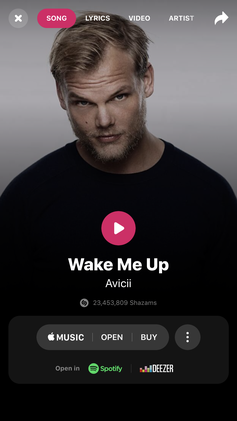
Interactive television is a form of media convergence, adding data services to traditional television technology. It has included on-demand delivery of content, online shopping, and viewer polls. Interactive TV is an example of how new information technology can be integrated vertically into established technologies and commercial structures.

A digital on-screen graphic, digitally originated graphic is a watermark-like station logo that most television broadcasters overlay over a portion of the screen area of their programs to identify the channel. They are thus a form of permanent visual station identification, increasing brand recognition and asserting ownership of the video signal.

Digital signage is a segment of electronic signage. Digital displays use technologies such as LCD, LED, projection and e-paper to display digital images, video, web pages, weather data, restaurant menus, or text. They can be found in public spaces, transportation systems, museums, stadiums, retail stores, hotels, restaurants and corporate buildings etc., to provide wayfinding, exhibitions, marketing and outdoor advertising. They are used as a network of electronic displays that are centrally managed and individually addressable for the display of text, animated or video messages for advertising, information, entertainment and merchandising to targeted audiences.

Ashwin Navin is an American entrepreneur, who is the CEO and co-founder of Samba TV, a data and analytics service that measures television viewership using opt-in data from Internet-connected devices and set-top boxes. The company has been compared to more traditional TV measurement firms like Nielsen which rely on the people meter to gather viewership data.
Vizio Holding Corp. is an American publicly traded company that designs and sells televisions, sound bars, viewer data, and advertising. The company was founded in 2002 and is based in Irvine, California. In February 2024, it entered into an agreement to be acquired by Walmart, so Walmart can expand advertising sales in video content that streams for free on Vizio devices.

Gracenote, Inc. is a company and service that provides music, video, and sports metadata and automatic content recognition (ACR) technologies to entertainment services and companies worldwide. Formerly CDDB, Gracenote maintains and licenses an Internet-accessible database containing information about the contents of audio compact discs and vinyl records. From 2008 to 2014, it was owned by Sony, later sold to Tribune Media, and has been owned since 2017 by Nielsen Holdings. In 2019, Nielsen Holdings announced plans to split into two separate publicly traded companies, Nielsen Global Connect and Nielsen Global Media. In October 2022, Nielsen Holdings completed the sale of Global Media, including the Gracenote subsidiary, to a private equity consortium.
Video fingerprinting or video hashing are a class of dimension reduction techniques in which a system identifies, extracts, and then summarizes characteristic
Xumo, LLC is an American internet television and consumer electronics company. It is a joint venture of Charter Communications and Comcast that operates the free ad-supported streaming television (FAST) and advertising video on demand (AVOD) service Xumo Play, and distributes Xumo Stream Box digital media players and Xumo TV smart TVs. The Xumo Play platform's service operations are based in the Greater Los Angeles suburb of Irvine, California. As of October 2020, Xumo Play has 24 million monthly active users.

Shazam is an application that can identify music based on a short sample played using the microphone on the device. It was created by the British company Shazam Entertainment, based in London, and has been owned by Apple since 2018. The software is available for Android, macOS, iOS, Wear OS, watchOS and as a Google Chrome extension.
Civolution is a provider of technology and services for identifying, managing, and monetizing audio and video media content. The company offers a portfolio of proprietary and patented digital watermarking and digital audio and video fingerprinting technology for media protection: forensic tracking of media assets in pre-release, digital cinema, pay TV and online; media intelligence: audience measurement, broadcast monitoring, internet and radio tracking; media interaction: automatic content recognition and triggering for second screen and connected television.

Hybrid Broadcast Broadband TV (HbbTV) is both an industry standard and promotional initiative for hybrid digital TV to harmonise the broadcast, Internet Protocol Television (IPTV), and broadband delivery of entertainment to the end consumer through connected TVs and set-top boxes. The HbbTV Association, comprising digital broadcasting and Internet industry companies, has established a standard for the delivery of broadcast TV and broadband TV to the home, through a single user interface, creating an open platform as an alternative to proprietary technologies. Products and services using the HbbTV standard can operate over different broadcasting technologies, such as satellite, cable, or terrestrial networks.

A smart TV, also known as a connected TV (CTV), is a traditional television set with integrated Internet and interactive Web 2.0 features that allow users to stream music and videos, browse the internet, and view photos. Smart TVs are a technological convergence of computers, televisions, and digital media players. Besides the traditional functions of television sets provided through traditional broadcasting media, these devices can provide access to over-the-top media services such as streaming television and internet radio, along with home networking access.
Samba TV is a television technology company that offers real-time insights and audience analytics. It was founded in 2008 by early employees of BitTorrent, including Samba TV's current chief executive officer, Ashwin Navin. The company develops software for televisions, set-top boxes, smart phones and tablets to enable interactive television through personalization. Through its portfolio of applications and TV platform technologies, Samba TV is built directly into the TV or set-top box and will recognize onscreen content—live or time-shifted—and make relevant information available to users at their request.

Toon Goggles is an American on-demand entertainment service for children that provides animated cartoons, live-action shows, games and music worldwide via the web and mobile applications on smartphones, OTT devices, smart TVs and tablets, led by CEO and co-founder Stephen Hodge.
A second screen involves the use of a computing device to provide a different viewing experience for content on another device.

Yahoo! Smart TV was a Smart TV platform developed by Yahoo! based upon the Yahoo! Desktop Widgets (Konfabulator) platform. Yahoo! Connected TV announced on August 20, 2008, at the Intel Developer Forum in San Francisco as the Widget Channel, it integrated the Yahoo! Widgets Engine with a new television oriented user interface to enable Internet connected applications to run and display on a 10-foot user interface. The platform was slowly being abandoned by its manufacturers, and was eventually deprecated. New apps that were based on Konfabulator stopped being added effective March 30, 2018, but existing apps can still be updated and installed, and HTML5 based apps are not affected by this.
Search by sound is the retrieval of information based on audio input. There are a handful of applications, specifically for mobile devices that utilize search by sound. Shazam, Soundhound, Axwave, ACRCloud and others have seen considerable success by using a simple algorithm to match an acoustic fingerprint to a song in a library. These applications take a sample clip of a song, or a user-generated melody and check a music library/music database to see where the clip matches with the song. From there, song information will be queried and displayed to the user.

Axwave, Inc. was an international software development company that developed a proprietary fingerprinting-based automatic content recognition (ACR) technology. Axwave was founded by Damián Scavo, former algorithmic trader and Loris D'Acunto, nuclear physicist. Axwave was headquartered in Menlo Park CA, and had offices in New York, Italy and Poland.
Inscape is a provider of ACR services to Smart TV OEMs. The company was founded in 2009 as TV Interactive Systems, later renamed Cognitive Media Networks Inc. On August 10, 2015, Vizio acquired Cognitive Media Networks and renamed it Inscape. In July 2016 Vizio announced Inscape will spin off and operate as a separate, privately owned company.
The Apple TV app is a line of media player software programs developed by Apple Inc. for viewing television shows and films delivered by Apple to consumer electronic devices. It can stream content from the iTunes Store, the Apple TV Channels a la carte video on demand service, and the Apple TV+ original content subscription service. On iPhone, iPad, iPod Touch, Vision Pro, and Apple TV devices it can also index and access content from linked apps of other video on demand services.










